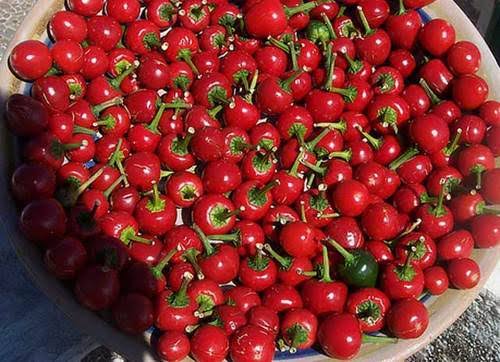Guwahati: Sikkim’s famous red hot cherry pepper “Dalle Khursani” has earned its Geographical Indication (GI) tag from the Department for Promotion of Industry and Internal Trade.
Geographical Indication Tags, are indications, which identify a particular product to a territory from where it derives a certain quality and/ or reputation.

Once a product is given a GI Tag, other parties, which are not actually associated with that geographical area, can be restrained from using the same Geographical Indication for their products.
The amount of heat in chillies is measured in Scoville Heat Unit. Dalle Khursani has a range of 1,00,000 to 3,50,000 SHU (Scoville Heat Units) and is considered one of the hottest chillies in the world.
Another pepper called ‘Bhut Jolokia’ grown in the neighbouring states of Arunachal Pradesh, Manipur, Assam, and Nagaland has a SHU range of 8,55,000 to 10,41,427.
Dalle Khursani is well known for its unique flavour and high pungency. It belongs to the family Solanaceae and genus Capsicum. Its plant grows up to 100-130 cm height in an open field and 150-180 cm height in greenhouse conditions.
Dalle Khursani is added to sauces, pickles, and pastes to increase their pungency and make them more flavourful. It is also known for its medicinal properties. It is rich in vitamin A, vitamin E, vitamin C, and Potassium, while low on Sodium. A 100gms of fresh Dalle Khursani has 240 mg of vitamin C (5 times higher than that present in an Orange), 11,000 IU of vitamin A, and 0.7 mg of vitamin E.
The GI application was filed by the Guwahati-based North Eastern Regional Agricultural Marketing Corporation Limited (NERAMAC). The Sikkim Horticulture Department’s Secretary, Mr. M.T. Sherpa, reportedly stated in an interview, “With GI, the crop will have global recognition and the marketing of the product will be beyond the national borders.”.
Last year, Sikkim produced around 250 tonnes of Dalle Khursani. Sherpa said, “The figure is certain to go up this year. Government intervention by way of providing seeds, nutrients, and other items will definitely boost production.”





